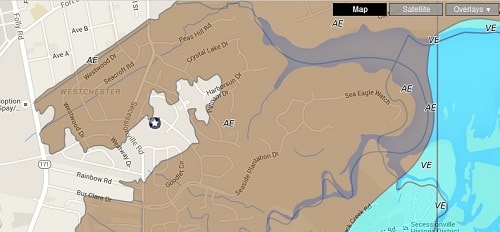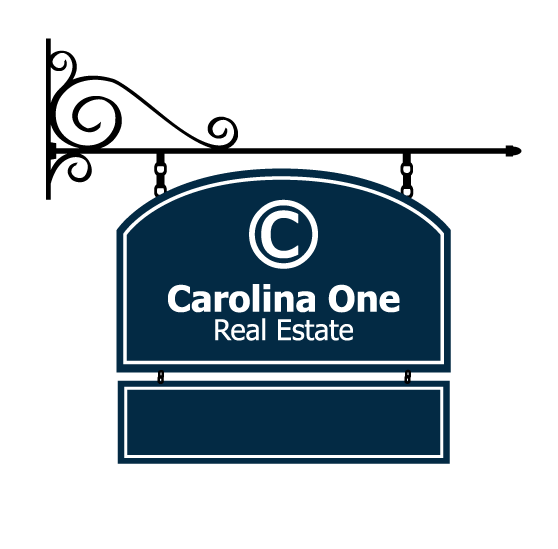Flood Zones in Charleston SC
Posted by Lee and Katherine Keadle on Thursday, October 8th, 2015 at 2:48pm.

Since it's hurricane season on the East Coast, we wanted to discuss the main flood zones in Charleston. As real estate agents, these are conversations we have regularly with buyers, whether they’re starting out their home search (trying to estimate ongoing tax and insurance costs) or narrowing down to just a few homes (weighing the pros and cons before making an offer to purchase).
There are 3 main brackets of flood zones you’ll find throughout the Charleston tri-county area:
X: Charleston’s Safest Flood Zone
The X flood zone is the safest for buying Charleston real estate because it is the lowest risk for flooding. FEMA uses this category for properties that have seen no flooding or less than 1 foot of collected water in the past 100 year history. Some of these properties are located outside of the 500 year flood plain, but for insurance purposes these homes are generally classified into simply the x zone.
If your home is located in this zone, you can estimate insurance costs to be around $450 per year. Your mortgage company will not require you to have flood insurance. However, we strongly recommend getting it because the coverage is worth the peace of mind. As the most affordable flood insurance in Charleston, this is a relatively small annual cost and could save a couple hundred thousand dollars in the small chance that you would need it.
AE: Higher Risk Flooding Determined by Base Flood Elevation
The AE flood zone is the middle ground and makes up much of Charleston County. It’s possible that these homes could see 1 to 3 feet of flooding in extreme weather. Depending on the level of the ground, homes are generally built on a crawl space or raised slab foundation in order to get the lowest floor joist of the house above the 100 year flood level. In the lowest lying areas, you’ll occasionally see elevated or pier foundations built to achieve this goal.
Flood insurance rates for homes located in AE flood zones tend to be higher (starting around $550 annually). The insurance cost difference for X versus AE used to be more drastic, but in the past few years we’ve seen this gap narrowed.
VE: Base Flood Combined with Velocity (Wave Action)
FEMA distinguishes VE flood zones by their high risk for flooding combined with moving water and wind (creating “wave action” or “side load”). Most of these homes are marshfront, deep water, riverfront (such as the Ashley, Cooper, or Wando Rivers), or beachfront.
Homes in the VE zone are the most expensive to insure, and you can estimate these costs starting around $3,500/year. As real estate agents, we typically don’t recommend buying a home in a VE zone unless you’re looking in the $750K plus price range with great water views to offset the additional insurance expense. People buy these homes for the location and the views, so keep in mind that this desirability comes with the risk of the VE zone. It’s a tradeoff, just like many factors in real estate. In other words, you can’t expect to buy an oceanfront home and pay only $600 in flood insurance each year.
Lesser Known Flood Insurance Tips
Many buyers don’t realize that flood insurance caps off around $250,000, and most people don’t purchase the additional coverage unless it’s a million dollar home. Due to Charleston’s high land values, most homes (or at least the damaged ground floors) can be repaired or replaced for this amount of coverage. The amount of coverage (and replacement) is a very important discussion to have with both your real estate agent and your insurance agent before you choose your policy.
Charleston’s island and peninsular geography make it a fantastic place to live because of the large number of waterfront homes, the many public water accesses, and the expansive views. However, it’s also difficult to estimate where one flood zone ends and another begins. A single street can have 2 to 3 different flood zones, and proximity to water does not necessarily determine its flood risk.
This vulnerability is why some older homes (especially in Downtown Charleston) are priced so low that it seems too good to be true. Most homes constructed in the past 15 years have been built at least a foot above base flood elevation (computed based on the 1% chance of flooding to that level). The BFE is also called the 100 year high water mark because statistically it shouldn’t reach this level but once every 100 years. This is why people use the BFE to build a foot or more above this level.
Before you make an offer to purchase, it’s important to have an insurance estimate (including a flood policy) from a reputable agent so that you understand the costs and risks associated with the home. He or she should be able to check whether a flood elevation certificate is available for the property or whether you’ll need to pay for one prior to closing.
If you’re narrowing your real estate search down to just a couple of homes, an insurance estimate could be the deciding factor if one option is drastically more expensive than another. And know that if you have insurance related questions or if you need an estimate, we’re happy to recommend a professional to work with!


